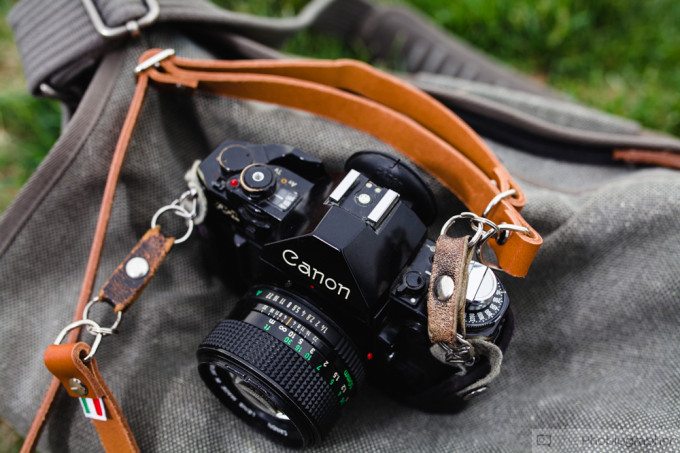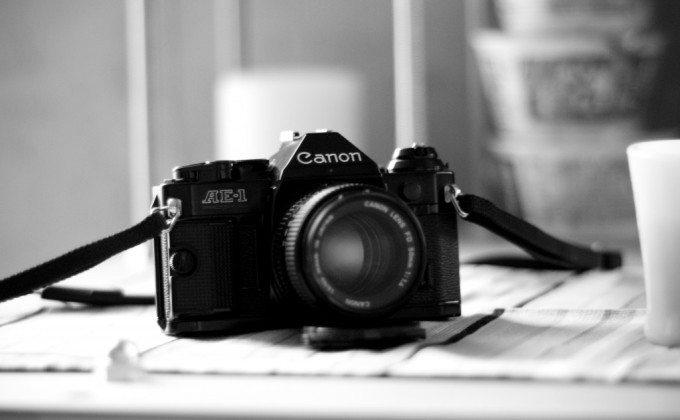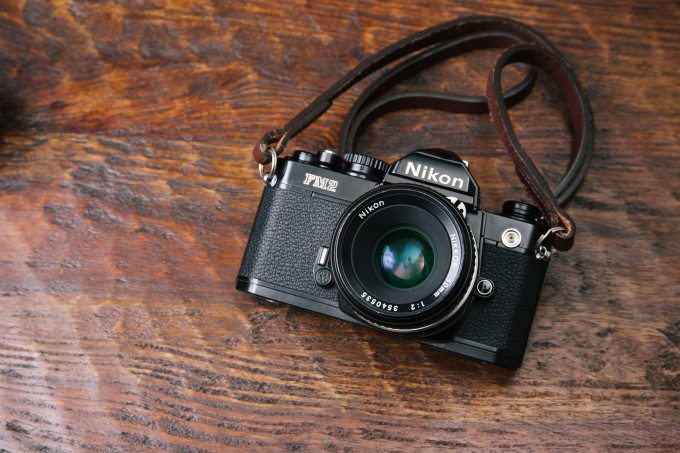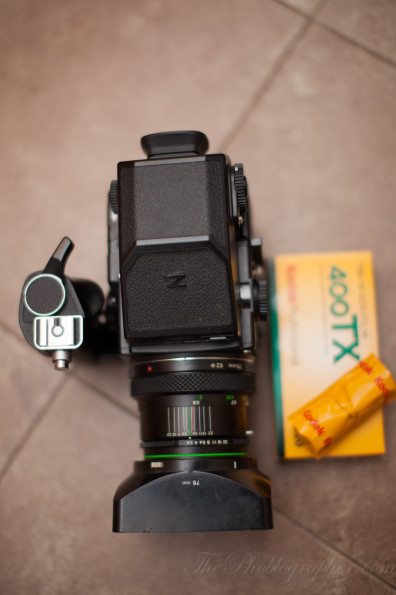Every time a photographer wants to start to experiment with film, new excitement stirs. But at the same time, it’s always wise to take a great educated guess as far as what camera you want to start out with. For starters, consider not only the camera system but the lens system–just like in digital photography. Figuring out what films you want to work with is another headache but one that is significantly easier to do than what camera you’re working with.
For this reason, we’ve come up with our list of the best film cameras for any photographer to start out on.
Canon AE-1
The Canon AE-1 was and possibly still is one of the most prevalent film cameras ever made. It has been long discontinued but many photographers learned on it loved it and some even use it today.What was so special about the Canon AE-1 was how simple it was to use as it had a program exposure mode that anyone could use just by setting the camera to automatic after figuring out the exposure setting.
Of course, we’re not going to encourage you to shoot it in automatic mode when you’re starting out–instead use the full manual mode which it is also capable of. In addition to the simplistic controls, the camera also is compatible with a large number of Canon FD lenses. Unfortunately, you should know that if you try to adapt these onto Canon digital camera bodies or those that use the EF lenses, you’ll lose stops of light.
However, Canon FD lenses are used by Indie film-makers for the beautiful look that they output.
Nikon FM2n
The Nikon FM2n can be found for relatively cheap pretty much everywhere you shop. It boasts the ability to shoot at 1/4000th, comes in black or chrome and is compatible with loads and loads of Nikon F glass as well as offerings from third parties. This camera won’t be able to take the latest Nikon G glass since they’re optimized more for the digital bodies. However, if the lens has an aperture ring around it then you’re all set.
The Nikon FM2n feels wonderful in the hand, and you’ll be delighted to know of their reliability and relatively simplistic operation. Like many other SLR cameras, this one has a split prism viewfinder that lets you get the most fine tuned focus that you can possibly achieve with the human eye.
Olympus OM1
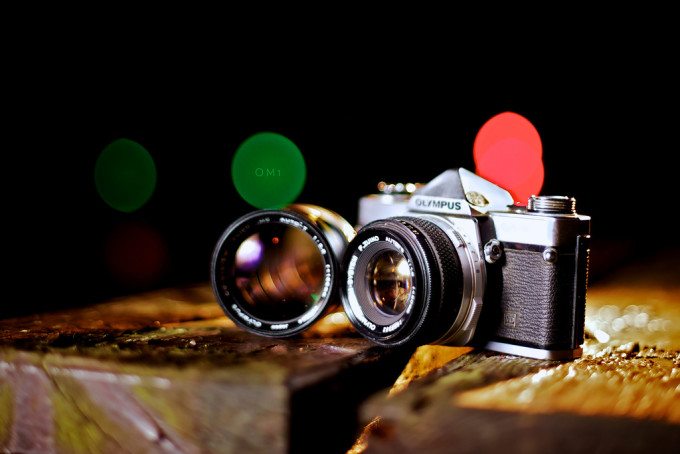
Inspired by my good friend Rick in more ways than one, I was going for interesting lighting, reflections, and massive bokeh. I nearly got there.
The only problem with all of the shots was that the focusing was just a tiny bit off – maybe 2mm – which makes all the difference when you’re at f/1.4
Anyway! This was my first ever camera, an Olympus OM1 which belonged to my father from “when he was a boy” and given to me about 10 years ago. Mounted is a 50mm 1.8 and beside it sits an OM Series 135mm f/2.8. I really need to get all of it serviced and run a few rolls of film through it.
Strobist:
YN460II on 1/64th power into shoot-through umbrella, camera left.
YN460II on 1/32nd power with home-made snoot, behind subject, camera right.
My Site | Twitter
The Olympus OM1 is the film camera that started the company’s OM product line and also influenced the design of the company’s OMD digital cameras. The Olympus OM1 is interesting and unique in that the aperture and shutter speed control are all around the lens–which in some ways makes sense but in other ways is counter-intuitive to what many other manufacturers have done for a while.
The OM1 can be found cheaply on many websites or probably at a local flea market. It can use a wide array of Olympus OM Zuiko lenses or third party offerings. The cameras are very comfortable and feel really great in the hand.
If you pick one up, be sure to check the battery meter. It can be easily replaced with other more modern batteries, but some cameras may have had the battery in there for so long that it may have corroded and killed the circuits. In that case, you can still fire the camera in full manual mode but without any sort of light metering–unless you know the tried and true Sunny 16 methodology. This will come in even bigger handy since the shutter speeds don’t go up anywhere as high as those of modern DSLRs.
Leica M2
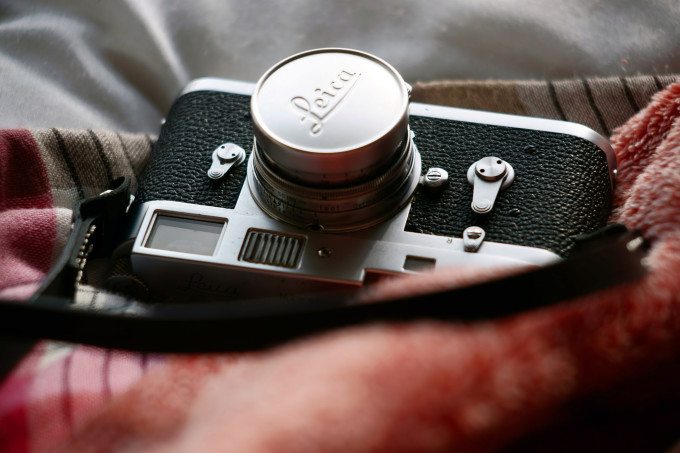
When they say that Leica cameras are meant to last a lifetime, they’re really not kidding. Indeed, the Leica M2 was designed a very long time ago and still works today. Part of this has to do with the lack of electronics in the camera, but the other part has to do with the German manufacturing techniques that made the product able to survive many of its owners.
The M2 oddly enough came about after the M3 and uses a cloth shutter–which means that it will be very quiet when shooting. It can use any M mount lens available (even those from Voigtlander and Zeiss) is a great accompaniment to any street photographer. They feel great in the hand and one of the best features of the design is the way that the film advance serves as a near perfect thumb rest.
Of any 35mm camera on this list, we recommend that you go for this one but consider the fact that the framelines are nowhere as adaptable as the more modern cameras–in fact they’re only really good for 35mm, 50mm and 90mm lenses. If you love shooting with film though, this camera is nearly perfect.
Bronica ETRs
This list wouldn’t be truly complete without a 120 film camera being featured. Though Hasselblad, Mamiya and Contax have created more popular options with more extensive collections of lenses and accessories, the Bronica ETRs was made by Tamron and features incredibly sharp lenses that only recently have been matched by digital cameras in terms of resolving power.
So why Bronica? Straight answer: they’re cheap, reliable, simple to maintain yourself, and offer great image quality. Beyond this, it will give you a glimpse into what medium format SLR cameras are like with the body, back, prism, and lens that help to deliver the image quality you want.
If you want something a bit more, we recommend springing for the Pentax 67 and never looking back.
Bonus: Pentax K1000
This list also wouldn’t be really complete without the Pentax K1000. It was the standard for schools for many years and offers full manual control on top of incredibly sturdy construction. You can use pretty much any Pentax K mount lens with the exception of some of the newer lenses and the lenses designed for APS-C sensors.


